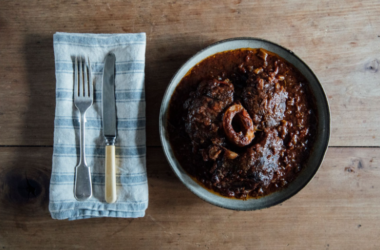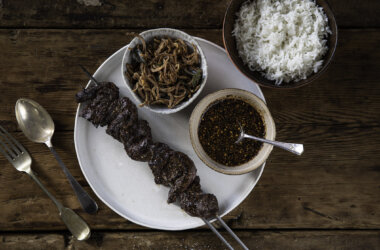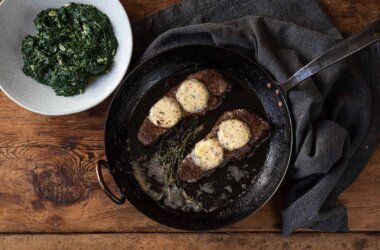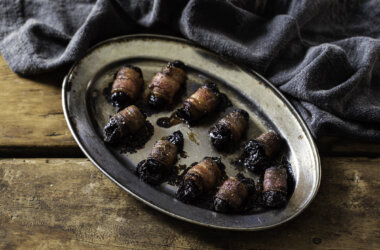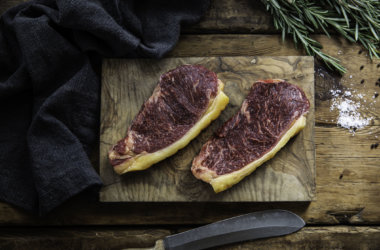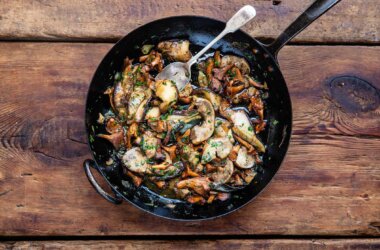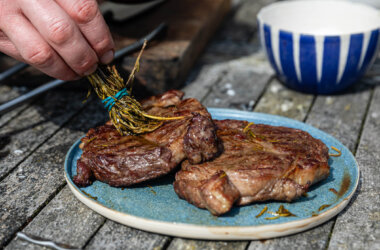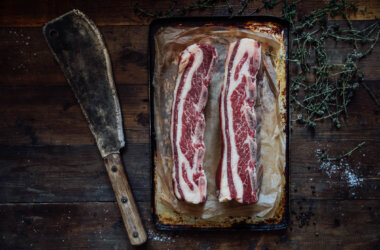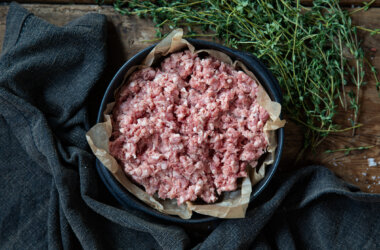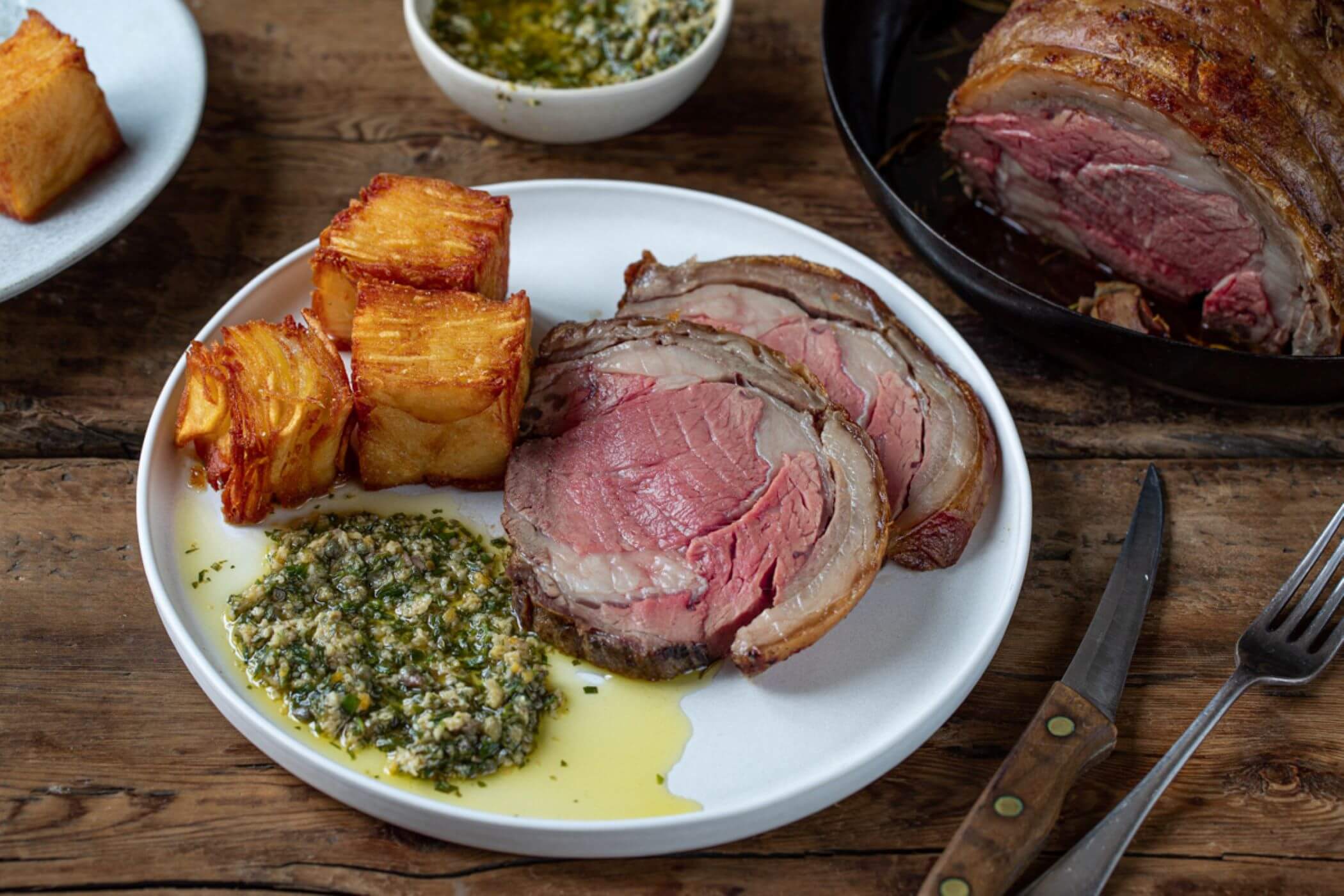
The beef ribeye is the most prized of the roasting joints from the beast. In this form, boned and rolled, it is a much simpler joint to cook and yet still fantastic to eat.
This recipe offers up two interesting and exciting variations on a theme. The themes in question are chips and salsa, two great friends of a roasted piece of beef, their culinary journeys intertwined. These confit potatoes are a sort of very fancy chip — thin layers of potato, confit in duck fat, then pressed, portioned, and deep-fried.
The thin layers offer a greater surface area for crisping up in the fryer, whilst the centre remains soft and flaky. Dragoncello is the Italian word for tarragon, and this salsa has that fragrant, anise-tinged herb at the centre of it. Soaked breadcrumbs and grated egg yolk give the salsa some body, while anchovies, capers, and plenty of vinegar give it the necessary punch.
Serves: 4
Cook time: 2 hours 30 minutes
Ingredients
For the dragoncello
Method
The potatoes need to be cooked and pressed the night before you want to fry them (you will need a Japanese mandolin to make these):
- Preheat your oven to 120°C.
- Melt the duck fat in a pan over a low heat.
- Slice the potatoes, on the mandolin, to about 1mm thick, into a tray or bowl. Season with fine sea salt, leave to sit for 3 minutes, and then pour over the duck fat. Mix well, trying to make sure that each slice of potato gets covered in fat.
- Line a medium-sized baking dish or oven tray with parchment paper and then begin to layer up the potatoes. Try to ensure an even distribution throughout the tray. Once all the potatoes are in (they should be about 2 ½ inches deep), pour over any excess fat from the bowl and then place a layer of parchment paper over the top and place in the oven for 1 ½ hours.
- Remove from the oven and then find a slightly smaller tray to place on top and then something heavy on top of that to weigh the potatoes down. This pressing is essential so that when we come to frying them, they don’t fall apart.
- Once cooled completely, remove the weight and place the tray in the fridge overnight.
- Turn the potatoes out of the tray and portion to whatever size you desire. Return them to the fridge until you plan to cook them.
For the dragoncello:
- Crumble the stale bread into a bowl and pour over 2 tablespoons of vinegar. Leave to sit for 15 minutes.
- Peel the egg and discard the whites. Finely grate the yolk onto the bread soaked in vinegar and stir together with a spoon.
- Add the tarragon, anchovies, capers, garlic, and 3-4 tablespoons of olive oil. Season with a little sea salt and then leave to one side to sit for 15 minutes.
- Return to the salsa and taste once more. Adjusting the seasoning as necessary.
To cook the ribeye:
- Take the ribeye out of the fridge about an hour before you want to cook it so it can come up to room temperature.
- Preheat your oven to 200°C.
- Season the meat well with sea salt.
- Place a large cast-iron skittle over a low heat, add the ribeye, and begin to render some of the fat around the joint. This should take about 10 minutes — keep moving the joint around.
- Then place in the oven for 10 minutes. Then reduce the heat to 140°C and cook for a further 45 minutes to an hour.
- Remove from the oven and leave to rest for at least 45 minutes.
- Heat your fryer, or oil in a pan, to 180°C, and fry off the potatoes, for 4 minutes, until golden brown.
